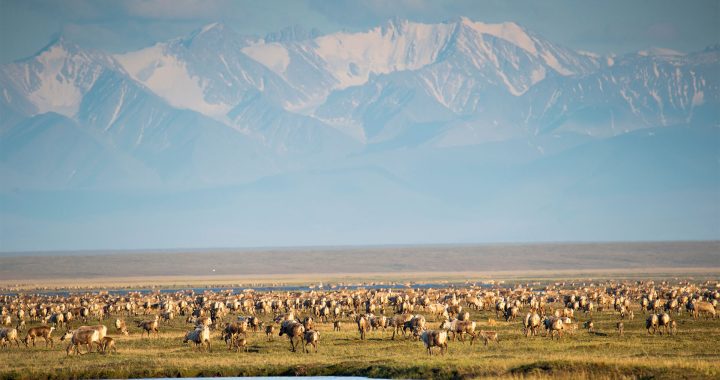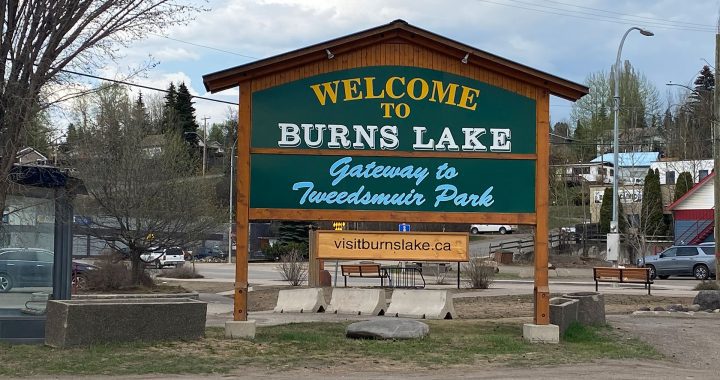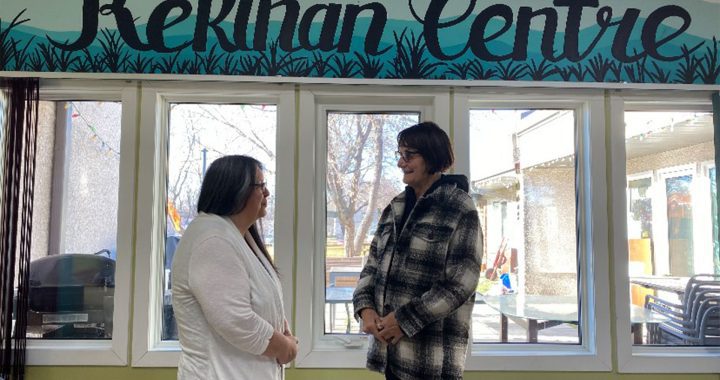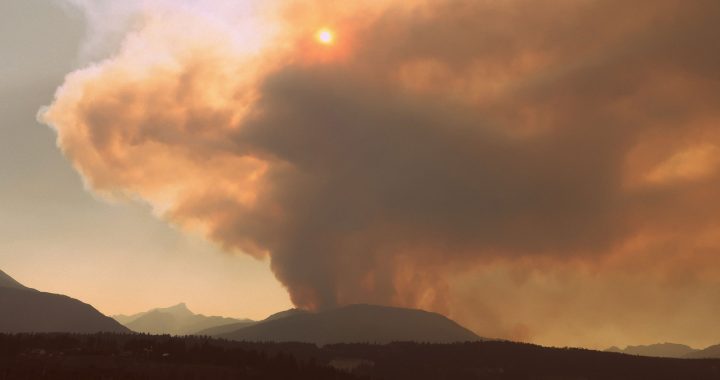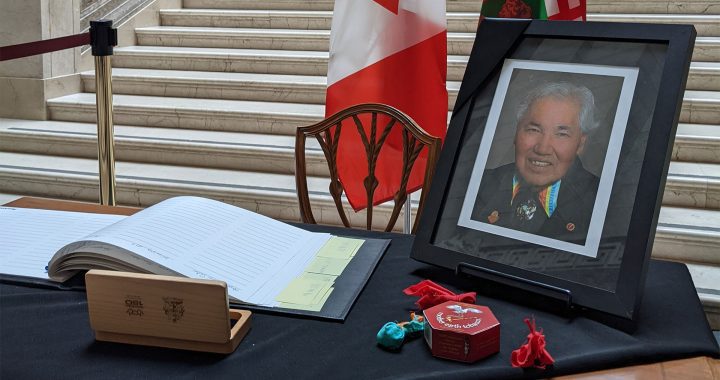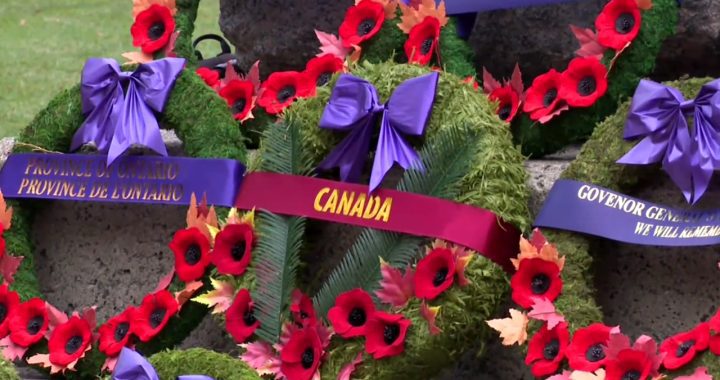Brittany Hobson, APTN News – Annie Burns-Pieper, Institute for Investigative Reporting
The $1.74 billion invested by the federal government for water infrastructure on First Nations hasn’t gone far enough to address issues faced by the 15 per cent of homes that depend on water delivered by trucks, say leaders.
“Why put a great new treatment plant with clean drinking water when you can’t still hook up the community?” asked Chief Larry Barker of Hollow Water First Nation in Manitoba where a more than $9 million dollar investment to design and construct upgrades to his community’s water treatment plant did not include money for piping water to nearly 50 homes.
Across the country, thousands of people rely on cisterns, large tanks for holding water used by individual homes that are not connected to water mains.
A consortium of students and journalists from First Nations University of Canada, MacEwan University, Mount Royal University, University of Regina, Global News and APTN News, coordinated by Concordia University’s Institute for Investigative Journalism (IIJ), has found that money spent by the federal government since 2015 have failed to include sufficient funding to connect homes to centralized systems in many parts of the country.
Research shows this type of system is prone to contamination and doesn’t provide residents with enough water for daily needs. Now, information uncovered by the IIJ reveals that communities, where some residents rely on cisterns, have experienced twice the risk of an outbreak of COVID-19.
For these reasons experts believe more focus needs to be put on moving people from cisterns to piped systems. “This push for ending boil water advisories by the Trudeau government does not even take into consideration any of these decentralized systems,” said Rebecca Zagozewski, executive director for the Saskatchewan First Nations Water Association, “Because it costs too much. Because it’s too overwhelming of an issue.”
While using cisterns is cheaper than installing piped systems, experts interviewed by the IIJ raised questions over whether the cost-benefit analysis performed by the government is truly the best choice for communitiesand residents said regardless of cost, they have a right to safe systems like their non-Indigenous neighbours.
“Anytime we try to get those things resolved, everybody screams money, money, money. And we’re like, do you scream that if it’s white people? Like, do you care how much it costs, you know, to get Walkerton fixed? You know, people went to jail for doing that. How come nobody’s going to jail for giving us bad water?,” said Dawn Martin-Hill, an associate professor in the Indigenous studies program at McMaster University. Martin-Hill is from Six Nations of the Grand River in Ontario and has lived with cisterns for about twenty years.
“If you come to our reserve and you drive down, one side is Caledonia, and then the other side’s the reserve. One side has running water, the other side doesn’t. I mean, it couldn’t be more abundantly clear that this is about racialized lines here” said Martin-Hill.
Indigenous Services Minister Marc Miller agreed that distribution systems required his department’s attention.
“We do know that there is still work in need to be done in communities with respect to piping.”
However, Miller said that moving homes from cisterns to piped systems isn’t always the answer.
“We know piped water, depending on how far you need to pipe it and given often distances between residences, is not the optimal solution,” said Miller.
Contamination Risk

In Tsuut’ina Nation in Southern Alberta, there was a $14.2 million federal investment into the design and construction of a new water treatment plant. Yet, according to the plant’s operator, 60 per cent of the community still does not have access to piped water and instead relies on wells and cisterns.
Kylie Meguinis, a Tsuut’ina resident, has water trucked to her home cistern. She has concerns over the safety of the water for her family of twelve.
“I don’t trust my own cistern because it hasn’t gotten cleaned in years,” Meguinis said. She wants her cistern to be cleaned and tested but said her requests have been ignored by the nation.
“As a mother, you only think, you know, how many hands has this water gone through until it gets to my children?”
The IIJ tested Meguinis’ cistern water for coliforms and E.coli and the results were negative. However academic research has found that E.coli is regularly found at unacceptable levels in cistern water.
Meguinis was relieved to find out the results of the testing but says until she can get more consistent water testing she will continue to boil her water.
Roy Whitney is the chief of Tsuut’ina Nation. He said when the new treatment plant was built in Tsuut’ina Nation there wasn’t enough money included to pipe water to every home using cisterns. He said the situation is not ideal.
“It’s not a long-term fix either.” Connecting all homes is costly and the community is still in discussions with the federal government on the issue.”
Perry Mcleod, a water treatment plant operator in Peepeekisis First Nation in Saskatchewan said he has found dead mice, snakes and even a car battery inside cisterns he has cleaned. “We advised our people not to drink from your cisterns,” he said.
Mcleod said while the water plant in his community produces safe drinking water, the cisterns it is put into can be up to 30 years old and are susceptible to contaminants leaching through cracked and porous walls, and debris entering through the cap.
“They’re always testing positive for E. coli and bacterias and whatever,” said Mcleod. “There’s a standing boil water on all the cisterns and we’re never going to lift it, until we get water trucked, or our water piped to every household.”
Cisterns require regular cleaning, which can be the responsibility of the band or the individual resident depending on the community but can be unaffordable in both cases.
“We clean them once our budget is gone,” said Barker.
Lisa Raven, a Hollow Water resident, has been living on a cistern for the past 15 years. She says her tank hasn’t been cleaned in nearly eight years.
“If you’re putting that clean water into a dirty tank…that really does defeat the whole purpose of all this treated water,” said Raven.
Experts say there are contamination risks with the transport of water as well. “You could have contamination with the hose at the treatment plant, if it’s not properly guarded and disinfected. You could have contamination because the truck is dirty,” said Zagozewski.
According to the 2018 First Nations Regional Health Survey, people were less likely to consider their water safe for drinking if it was trucked in. The survey, conducted by the First Nations Information Governance Centre (FNIGC) and its regional partners, is the only First Nations-governed national health survey of First Nations reserve and Northern communities.
It found people who received piped water from a local or community water supply were most likely to consider their water safe for drinking.
Rationing water
The World Health Organization recommends 50 to 100 litres of water per day per person to meet the basic health needs for things like laundry, cooking, cleaning and bathing but according to Statistics Canada in 2017, the average Canadian used 220 litres per day.
First Nations homes, which can sometimes house up to 15 people, have cisterns which hold between 1000 to 7000 litres. They are generally filled up once or twice a week.
As a result many families have to ration water.
“You’re worried all the time that you’re going to run out of water,” said Martin-Hill. “You give your kids a bath together so that you save on water. You don’t do laundry to save on water. It’s every decision you make from the time you wake up until you go to bed — [you’re] worried about running out of water. And it’s not just running out — it costs money to fill it up.”
“A lot of people run out of water, and when people run out of water it’s very unsanitary for everyone in your household,” said Mcleod.
Pandemic pressures
During a pandemic, concerns around having sufficient clean water are heightened. “If there is not an adequate supply of water, there’s going to be an issue with maintaining hygiene,” said Lalita Bharadwaj, professor at the University of Saskatchewan’s school of public health.
COVID-19 has made life more challenging for Meguinis who relies on her cistern to supply herself and 11 other family members. “We’re all at home. We’re consuming water.
We’re needing to do this, we’re needing to do that, and I have to wash clothes, and wash dishes, to cook, to keep the house clean. And it was such a frustrating situation,” she said.
“I shouldn’t have to beg to get water for my kids.”
Barker has noticed residents in his nation using more water as well, “they’re staying in the community. That means when they’re at home five days a week, seven days a week, and they’re using more water.”
The consortium found Indigenous communities where some residents rely on cisterns have experienced twice the risk of an outbreak of COVID-19.
Using data, access to information requests and Esri ArcGIS technology, the team found that the statistical risk of a COVID-19 outbreak in these communities was independent of the number of people living on reserve and reported housing density.
Shirley Thompson, an associate professor at the University of Manitoba at the Natural Resources Institute, has researched cisterns as part of her broader work on health and housing for six years.
She reviewed the consortium’s data and said the correlation was clear.
Without further research the cause of the connection is unknown but Thompson speculated on the reason for the correlation.
“Cisterns are a leading source of contamination in First Nations.
That stresses the body in all sorts of ways, and we know that people who have higher risk for infections, that have weakened immune systems, are more prone to COVID,” she said.
She added that having to ration water could be driving people out of their homes and into the community, “something we have to consider is that people who are running out of water are using the water taps, are going out more frequently in order to access water. And in most communities, there’s one public water tap, so they’re all accessing the same source.”
These results were presented to the minister in a January interview, “we would have to look at the causative factors,” said Miller, but noted “we know the spectrum of vulnerabilities that exist in Indigenous communities. It perhaps contributes to the general wellness index.”
As of January 2021, $1.1 billion in support has been announced for the Indigenous Community Support Fund (ICSF) which helps Indigenous communities respond to COVID-19.
Leslie Michelson, spokesperson for Indigenous Services Canada (ISC) said this fund could be used to expand community water supplies if needed.
Michelson said in an email, “to date, general information from ICSF recipients indicates funds have been spent on such measures as food insecurity, perimeter security, and preparedness measures to prevent against the spread of COVID-19.”
She said information on if this fund was used for water supplies and trucked water was beyond the scope of this reporting.
New investments failing decentralized systems
The federal government invested $9.4 million into updating and expanding the water treatment plant in Hollow Water First Nation in an attempt to end a boil water advisory that had been in place since December 2016.
The long-term boil water advisory was lifted in December 2018 and the community was added to the government’s list of successes in its goal of ending all long-term boil-water advisories. But Barker doesn’t see it that way.
“Canada thinks that they should pull that boil water alert. And I made issues about it,” said Barker, “I sent notice to them, we are not finished.”
There are still roughly 50 houses using cisterns, including his, which do not have clean running water. “It doesn’t make any sense. So they need to cough up some money to complete the water system,” said Barker.
However, he was told by ISC that connecting the remaining homes would cost too much. In the meantime, the remaining homes are left in a precarious position. “Right now, people are scared to drink out of the tap,” he said.
“I certainly don’t want to drink the water that’s in our holding tanks. I don’t even give it to our dogs,” said Raven.
Read More:
Report: Lifespan of First Nations water infrastructure cut short by underfunding
Indigenous services minister ‘alarmed’ by allegations about construction practices on First Nations
ISC’s service standards say that decisions around installing pipes to homes versus cistern systems are generally made based on 20-year life cycle cost, “the most economically feasible, physically appropriate system to meet the water and wastewater needs of the community in question shall be chosen.”
The department says that to be considered for conventional high-pressure piped water lot frontages in the community shall average no more than 30 metres.
Michelson said First Nations that want piping for longer distances will need to find money to finance this themselves.
Lori Bradford, assistant professor in the School of Environment and Sustainability at the University of Saskatchewan said the distances decided by ISC are not always in line with tradition.
“The cultural preference for a lot of First Nations that live on the prairies to live in family pods and then they’re spaced further out in the reserves away from the central areas of the reserves. So the houses are located a lot farther apart,” she said.
She says because cisterns are not desired by many communities they are viewed as something that is being forced upon them. “Cisterns have the perception of being a colonizing and socially imposed method of getting water from the federal government,” she said.
Experts say this is part of the broader ongoing issue of a lack of local control. They say First Nations have not been given enough authority to choose the solutions they want.
“I think the government and Indigenous Services Canada do need to function differently for sure. And it does need to start with community planning and a different type of governance system within the government of how nations work with the nation of Canada,” said Jessica Vandenberghe, an engineer, consultant and Sixties Scoop survivor from the Dene Thá First Nation.
Tim Vogel, a PhD student and sessional lecturer at the University of Saskatchewan has studied cisterns.
He said while the risks are well documented they are far cheaper than installing pipes connected to the water system, especially in communities where homes are quite spread out — but only in the short term.
Vogel argues that in the long-term, “the values of the community and the health impact, and creating better health, to me justifies greater capital expense.”
Based on a study he conducted in 2018 at the University of Saskatchewan, maintaining a truck-to-cistern system amounts to an extra $569,400 per year if you include knock-on costs of maintaining roads, water trucks and healthcare costs for illnesses arising from unsafe water.
In 2011, the most comprehensive review of First Nations water systems produced by engineering Firm Neegan Burnside concluded that for dwellings built near to each other, “extending piped water and wastewater servicing was the most cost-effective solution.”
But while more people have piped water than ten years ago, communities say the change has been too slow to come.
“I’ve been waiting for a decade,” says Barker. “I’m still going to keep pounding on their doors for funding, so we can complete the water system right from one end of the community to the other end.”
Files from Karina Zapata, Noel Harper, Ryan Kessler, Tamara Pimentel, Jayme Doll, Krista Hessey, Patti Sonntag, Emma Wilke, Andrea Hill, Priscilla Wolfe, Marney Blunt, Patricia W. Elliott, Doris Wesaquate, Morgan Esperance, Theresa Kliem, Dylan Earis and Ethan Butterfield.
Investigative team:
Institute for Investigative Journalism reporting fellowships:
Angela Amato, MacEwan University
Jaida Beaudin-Herney, First Nations University of Canada
Noel Harper, Mount Royal University
Karina Zapata, Mount Royal University
MacEwan University:
Angela Amato, Aubrianna Snow, Nikita Case, Brittany Ekelund, Gabriel Gauthier, Benjamin Hollihan, Rudy Howell, Cecilia Lietz, Stefan Salegio, Corbin Stewart, Andy Trussler, Instructor: Steve Lillebuen
Mount Royal University:
Noel Harper, Christian Kindrachuk, Georgia Longphee, Kiah Lucero, Andrea Wong, Karina Zapata, Instructor: Janice Paskey
First Nations University of Canada:
Taryn Acoose, Brittany Boschman, Charmaine Ermine, Jennifer Francis, Danna Henderson, Krystal Lewis, Alicia Morrow, Darla Ponace, Mercedes Redman, Shayla Sayer-Brabant, Doris Wesaquate, Instructor: Patricia W. Elliott.
University of Regina:
Suliman Adam, Kerry Benjoe, Adam Bent, Ethan Butterfield, Jacob Carr, Dylan Earis, Morgan Esperance, Mick Favel, Libby Giesbrecht, Sayda Momtaha Habib, Theresa Kliem, Michelle Lerat, Donovan Maess, Kaitlynn Nordal, Kehinde Olalafe, Heather O’Watch, Julia Peterson, Tuuli Rantasalo, Paige Reimer, Kaitlyn Schropp, Dan Sherven, Penny Smoke, Dawson Thompson, Jasper Watrich, Instructors: Patricia Elliott, Trevor Grant, Layton Burton
See the full list of “Broken Promises” series credits and more information about the consortium here.
Produced by the Institute for Investigative Journalism, Concordia University.
For tips on this story, please contact the reporters at: iij.tips(at)protonmail.com.





